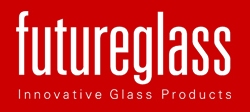Easy Clean Glass
Over the past couple of years there have been several items on ‘self cleaning’ treatments using nano technology. Most companies have aimed their product at the glass market. Some have tried to ‘all things to all surfaces’.
The claims for the products have varied from modest to bizarre.
.
There are two distinct approaches to these coatings, one based on Titanium Dioxide the other Silicone Dioxide. One attracts water the other repels it.
.
Looking primarily at glass the Titanium Dioxide products cause water to ‘sheet’ on the glass, releasing the dirt and washing it off. The Silicone Dioxide ones have the opposite effect, giving the surface non stick properties similar to a frying pan.
.
The durability claims vary from 6 months, at least 2 years, up to 3 years etc.
.
The application procedures are generally not complicated, but getting an even 100% coverage of the entire area can be difficult.
.
The material cost varies widely, with estimates of £75 per average table to £200.
.
This technology is still very much in its infancy. Laboratory test gives an indication of how it might perform. As some very large companies have found out to their cost, what happens in a testing cabinet is not necessarily what happens in the real world. It may well be that this technology out performs expectations, but it will take several years before we know.
.
In the meantime there is a tried and tested alternative in the form of Polymer Coating Technology, which has been in use for over 30years. It is easy to use and inexpensive at around £25 per average table.
One of the most dramatic examples of its efficiency is when applied to ship bridge windows making the wipers redundant! (Cars as well by the way)
.
Lets look at why there is so much interest in easy clean/self cleaning glass.
.
Despite looking like an easy clean product, glass by its very nature is an inherently high maintenance item. Understanding a little about glass is the first step to keeping it clean. Understanding how it gets dirty is the second
.
Under the microscope the surface that’s smooth and flat to the naked eye becomes a mass of pits and craters and has a honeycomb structure, which is hydrophilic, which means it attracts and retains contaminants.
.
Each of the millions of pits and craters provides keys that lock in insoluble dirt – the material left behind after every conventional wash.
.
No amount of washing with ordinary detergents will remove insoluble dirt, it will however, go on providing an adhesive layer for further soiling by airborne contaminants like exhaust fumes and unburnt fuel from cars, aircraft, and railway engines, as well as industrial pollutants dissolved in rainwater.
.
You will have seen this happen, as mentioned above, at home without realising it. When you replace a broken pane of glass, on the day it is fitted it sparkles, but the existing one alongside it is dull. After a couple of months the new pane is dull like the old one and no matter how hard you try, you cannot restore the sparkle.
.
The question now is what can be done to give glass the properties we would like? Changing existing glass to, or specifying a different glass on new build, doesn’t work, as there is nothing better. ‘Self cleaning’ glasses that have come onto the market in the last couple of years, primarily aimed at the conservatory market
The practical answer to the problem lies in Polymer Coating Technology.
.
The first Polymer coating was developed by Howard Ohlhausen, from Illinois in the late 1960’s. A wide range of similar products have come on the market over the years, and are usually named using a combination of words like rain, shield, glass, clear, invisible, maid, mate etc. In terms of performance they range from cheap domestic ‘throwaway’ products all the way to expensive industrial contractor only applied systems. Some of the best known ones within this range are RainX, Clearshield and Kleentec.
.
When the Polymer solution is applied to the glass it chemically bonds to the surface, sealing all the pits and valleys and give the surface similar properties to that of a ‘non-stick’ frying pan. Now that the ‘keys’ have been removed the dirt, salt etc. no longer has anything to get a grip of and simply washes off.
.
On going maintenance under normal conditions is a quick ‘top up’ every couple of years.


